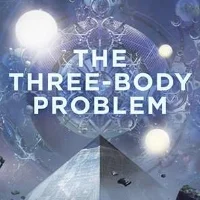In Architects of Memory, Karen Osborne’s intriguing debut from Tor, humankind has spread to the stars. Think interstellar ships exploring and colonizing distant solar systems, classical-physics-defying technology, a flawed but noble species boldly going where it has never gone before, contact with an advanced alien civilization—all the tropes you know and love from your favorite incarnation of Star Trek.
Now refract those tropes through the occluding lens of laissez-faire corporate capitalism and buckle up for a wild, unsettling ride. Don’t expect the United Federation of Planets to provide a check on the excesses of concentrated wealth and power. Osborne imagines a darker future, in which sovereign corporations like Manx-Koltar, Wellspring Celestial Holdings, and Aurora Company have replaced nation-states, with great results for shareholders and the wealthy few, and predictably dire consequences for the ninety-nine percent.
And don’t forget about that advanced alien civilization. They’re called the Vai, their technology is the definition of Clarke’s third law, and their take-no-prisoners attacks against human colonies were unstoppable until an alliance between two rival corporations, Aurora Company and Manx-Koltar, unexpectedly turned the tide at the Battle of Tribulation. After Tribulation, the Vai retreated across an interstellar boundary known as the White Line and haven’t been seen since, leaving Aurora Company, Manx-Koltar, and the rest of the mega-conglomerates in a state of uneasy cooperation and constant vigilance.
Ashland Jackson, an ace pilot in Aurora Company’s salvage corps, knows all too well the downside risks of corporate hegemony and intergalactic warfare. Ash is an indenture, trying to earn Auroran citizenship. It might be a pipe dream—the indenture system is rigged so that she accrues debits to her citizenship account faster than she does credits—but she is determined to beat the odds, because her life depends on it.
Before Ash joined Aurora, she and her fiancé Christopher were indentured to a different company, Wellspring Celestial Holdings, at a colony that mined celestium, the dangerous but invaluable substance that fuels spacecraft engines. Wellspring wasn’t known for its indenture-friendly policies, but it was the couple’s only shot at citizenship, so they embraced it.
Then the Vai attacked. The Wellspring colony was destroyed, leaving Christopher dead and Ash trapped in the rubble of a collapsed mine shaft. Wellspring Celestial Holdings collapsed, too, and Ash and the few other survivors would have been left for dead if Aurora Company hadn’t come to the rescue. With help from Captain Kate Keller and Doctor Reva Sharma, the Auroran citizens who rescued her, Ash is able to join Aurora Company with a more viable (but still difficult) path to citizenship. She even finds a bit of emotional solace in a blossoming love affair with Captain Keller. From ashes, hope.
The problem: Ash has celestium poisoning from the mine collapse. The debilitating disease is slow to develop but ultimately fatal without treatment. Worse, the cure is expensive—and only available to corporate citizens. Ash needs to keep her illness a secret so she can earn Auroran citizenship before she becomes symptomatic. If Dr. Sharma and the company find out she is sick, her indenture contract will be terminated and she will become a permanent uncitizen living in poverty on a space station until the disease kills her. (Or she’ll be sent back Earth, which is implied to be exactly as bleak as you’d expect from extrapolating 2020’s worst trends two or three centuries into the future.) It’s a bitter dilemma: she can lie to her employer and co-workers and friends to save herself, thereby putting everyone on the salvage crew at risk; or she can give up and die.
Things get more complicated when Ash and her crew recover a mysterious Vai artifact from the wreckage of the Tribulation battlefield. The artifact might be a weapon, or it might be a zero-point-energy battery, or it might be something else entirely. The one thing Ash and her friends know for sure: the Vai artifact is extremely valuable. The corporation that unlocks the artifact’s secrets won’t just win more market share—it will control everything. That’s an asset worth breaking a few rules—and sacrificing countless lives—to own.
If you think you know where this is going, you’re probably half right. Osborne’s sharp critique of the excesses (read: rapacious immorality) of unfettered corporate capitalism is relentless and nuanced. This isn’t a story of heroes and villains; it’s a story of perverse incentives and mistaken beliefs. If people behave immorally in a system that gives them no other choices, the problem isn’t the people—it’s the system.
Don’t assume the story will play out exactly as you expect, however. The novel is full of surprises, which I won’t spoil except to say that Star Trek’s post-scarcity utopian optimism isn’t the only sci-fi trope that gets reimagined as Ash and Captain Keller fight the good fight against a corrupt worldview that values power and profit over life. It’s not the kind of fight you win in a single battle, or a single book. Fittingly, Architects of Memory is the first volume in a duology. The second volume, Engines of Oblivion, will be published in 2021. Until then, don’t let the corporations grind you down.
Karen Osborne, Architects of Memory. New York: Tor Books, 2020.
















!["Dark Matter" [Spoiler] Review: Blake Crouch’s Science Fiction Thriller Delves into the Multiverse](https://images.squarespace-cdn.com/content/v1/5495fc96e4b0d669a5b4ba80/1510258393943-UIS2LSD6OMI3B3X9E0KB/Dark+Matter+2.jpeg)















There is so much out there to read, and until you get your turn in a time loop, you don’t have time to read it all to find the highlights.